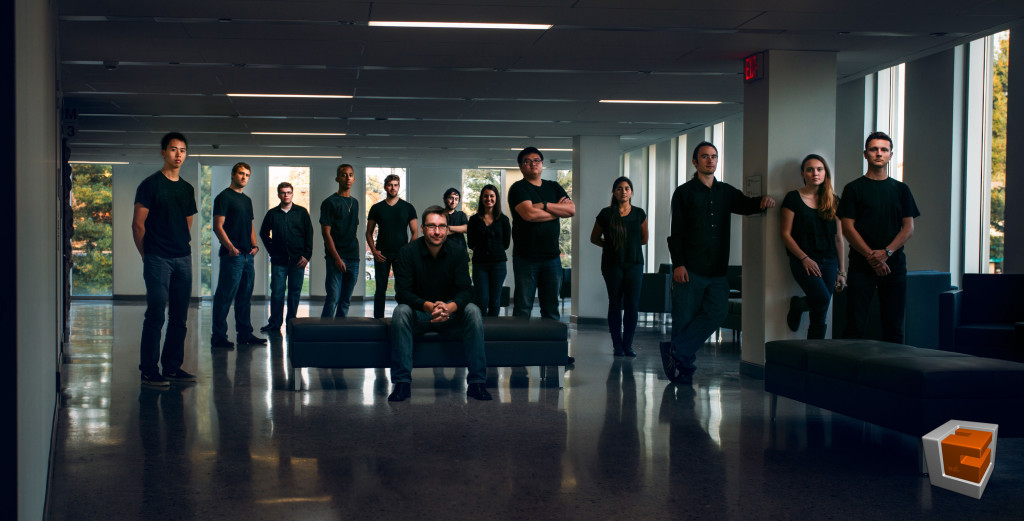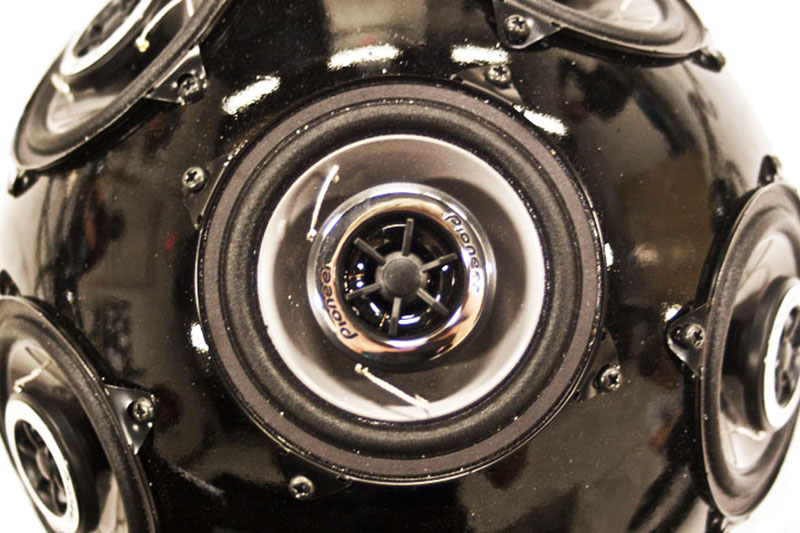Named as one of the top six national transdisciplinary exemplars (a2ru, 2015), and one of the top eight research projects at Virginia Tech (VT) (DCist, 2014), a contemporary intermedia ensemble Linux Laptop Orchestra or L2Ork (pronounced as ‘lohrk’), thrives upon the quintessential form of collaboration found in the western classical orchestra and its cross-pollination with increasingly accessible human-computer interaction technologies for the purpose of exploring expressive power of gesture, communal interaction, discipline-agnostic environments, and the multidimensionality of arts.
Founded in May 2009, L2Ork is a transdisciplinary initiative by VT’s Digital Interactive Sound & Intermedia Studio (DISIS), School of Performing Arts (SOPA), and the Institute for Creativity, Arts, and Technology (ICAT). As the world’s first Linux-based laptop orchestra incorporating extensive study of gesture and Taiji (Tai Chi) choreography L2Ork offers optimal infrastructure for creative research at minimal cost. By providing a seamless integration of arts and sciences it is in part designed to bridge the gap between STEM and the Arts, with particular focus on K-12 education.
Since its inception, L2Ork has helped start seven laptop orchestras in North and South Americas, most of which rely heavily on its affordable design. L2Ork’s infrastructural backbone, pd-l2ork, a Pure-Data variant with its unique K12 learning module has been utilized in over half-dozen K-12 Maker workshops, including a Raspberry Pi Orchestra summer gifted program introduced in 2014. In fall 2016, L2Ork introduced world’s first Raspberry Pi Orchestra and an expanded array of outreach engagements, workshops, and camps. Today, a growing number of international institutions and artists use pd-l2ork in their everyday creative work and instruction.
For a more detailed overview please visit the No, Really, What is L2Ork? page.
Research angle
L2Ork has and continues to demand a considerable amount of my creative energy. What keeps me enthralled is its multifaceted nature. Apart from the obvious aspirations of exploring the new artistic paradigm and growing its reputation as a professional ensemble, I see L2Ork also as:
- research into novel human-computer interaction (HCI) interfaces;
- research into new user interfaces (UI) with particular focus on discipline-agnostic real-time representation of time-sensitive data (e.g. musical score);
- OS optimization for low-latency operation;
- the design and engineering of new and affordable audio interfaces (e.g. hemispherical speaker);
- K-12 (Kindergarten to 12th grade) education with focus on integration of STEM, Arts and Design using Maker format;
- holistic exploration of arts, mind, and body, through gesture and choreography (e.g. using Taiji);
- research into digital audio spatialization using traditional ensemble paradigm;
- integration of other media and developing new tools for such integration (e.g. dance, visual, and telematic multi-site performances), etc.
The initial pilot project focusing on the design and implementation of the infrastructure, including hemispherical speakers, was developed in collaboration with Tom Martin (VT) and Eric Standley (VT). Since, the project has engaged a broad array of faculty and students around the world and its infrastructure has been used in various and sometimes entirely unsuspecting ways.
Project milestones:
- The design and development of world’s first Linux-powered laptop orchestra, including custom hardware, supporting software, and optimization of the Linux platform.
- A network of 20 on-campus multidisciplinary stakeholders. Raised $50,000 in startup funds from internal and external (MSI Computer, Renoise, Roland Corp., Sweetwater, Modern Device, System76, and most recently Infusion Systems) sources.
- Development of the pd-l2ork (an independent fork of Pure-Data maintained as part of the L2Ork project) with thousands of patches and improvements.
- Initial summer research initiative sponsored 12 undergraduate researchers, 2009.
- Presented at the TEDxMidAtlantic in Baltimore, MD, 2009.
- YouTube speaker building documentation, 2009.
- Featured in dozens of international news outlets including, magazines, TV, radio, and online media. L2Ork debut was also featured on Slashdot resulting in 600,000+ hits to the site in three hours, 2009-present.
- Partnership with Boys & Girls Club of Roanoke, VA, building a satellite laptop orchestra for the inner city 4th and 5th grade students were trained as part of an afterschool program with the goal of designing their own instruments and co-performing as part of a DISIS event at Virginia Tech. The project was originally externally funded by 21st Century and Bank of America grants ($20,000), securing additional 3 undergraduate research positions, 2010-present.
- Featured on the front page of the international Linux Journal, 2010.
- Recipient of the Virginia Tech XCaliber award for “for exceptional, high caliber contributions to technology-enriched teaching and learning,” 2010.
- Raised over $61,000 for regional, national, and international tours, including the inaugural three-week tour of Europe, 2010-present.
- L2Ork’s Half-Life composition wins first place on the first international laptop orchestra competition, 2011.
- Secured ongoing $10,000 sponsorship through Virginia Tech Technology-enhanced Learning and Online Strategies (TLOS) for the purpose of purchasing new laptops, 2012.
- Winner of the Newblankets Inc. Satchmo SuitSup Award for work on pd-l2ork, 2012.
- Developed pd-l2ork K12 module for K-12 education purposes, interfacing with Arduino boards, Nintendo Wii hardware, and Raspberry Pi GPIO. K-12 module was used in over half-dozen Maker camps and after-school educational programs across the world, including inaugural Raspberry Pi Orchestra gifted summer program in partnership with the Montgomery County Public Schools, 2012-present.
- Established L2Ork endowment fund through Virginia Tech College of Liberal Arts & Human Sciences, 2012.
- Helped start seven similar international laptop orchestra initiatives (Boys & Girls Club of Southwestern Virginia, University of North Carolina Greensboro, Stetson University, Shawnee State University, Santa Clara University, Brasilia laptop ensemble, Sweet Briar College), six of which rely in part on L2Ork hardware design and software infrastructure.
- New work for L2Ork and dance choreography commissioned by the Temple University’s Vice Provost for the Arts, 2013. Presented as invited keynote at the Brazilian symposium on computer music, 2013.
- DCist names L2Ork one of the top eight research projects at Virginia tech, 2014.
- L2Ork selected by peer review as one of the six transdisciplinary exemplars among member a2ru research universities, including top 30 research one institutions with transdisiciplinary initiatives in the United States, September 4, 2015.
- Nominated for the RBTC’s People’s Choice award, 2017.
Selected L2Ork Compositions:
- Citadel (2009)
- Half-Life (2009)
- 13 (2010)
- Serene (2011)
- Rain (2011)
- Between (2013)
- Rain (2015)
- L2Orkin’ Around (2016)
- An Ending (Ascent) (arrangement) (2016)
- Alien (2018)
- Into the Abyss (2020)
Research Team:
Ivica Ico Bukvic (PI)
Tom Martin (VT)
Eric Standley (VT)
Liesl Baum Walker (VT)
Research Publications:
Software:

